|
Roger
Johnston
Musician, friend
Nov. 8, 2004
http://babelogue.citypages.com:8080/pscholtes/2004/11/15
THIS
IS THE COMPLETE READING AT ROGER’S FUNERAL BY REVERAND ERIC HUCKE – PASTOR,
BEMIDJI UNITED METHODIST CHURCH – SCRIPTURE
READINGS: ECCLESIASTES 3:1-8 ROMANS – CHAPTER
8
 1.
It is perhaps more than appropriate that we honor
Roger Johnston on this day, which is set aside
to remember the veterans of America’s wars.
Not that he was some kind of war hero – not
at all. 1.
It is perhaps more than appropriate that we honor
Roger Johnston on this day, which is set aside
to remember the veterans of America’s wars.
Not that he was some kind of war hero – not
at all.
But
it was through his military service that he came
into contact the the other servicemen who together
became part of what was Roger’s greatest achievement
in life. An achievement which lay unrecognized for some thirty years – an
amazing story, really.
I
first met Roger when I came to Bemidji to be the
minister of the local Methodist Church five years
ago – in 1999. It turned out that he was the custodian
for our church and had been so, for a number of years prior to my arrival.
Shortly
after I arrived, Roger, who otherwise seemed very
shy and quiet spoken, came to me to ask for a couple
of weeks off work. 2. I asked him to explain and he cautiously told
me that he had been a member of a rock and roll band
in the army in the 1960s in Germany and they were
having a reunion.
I
guess I’m not sure what he thought my response
would be . . . since I was a minister, of course,
and perhaps he was concerned that I would not approve
. . . since he hardly knew me at that time.
Well,
I was rather dumbfounded to discover that here
it turned out that this rather reclusive guy
had had a whole other life . . . pretty amazing!
And since I grew up in the heyday of rock and
roll music in the 1960s – I really
thought it was pretty cool. After that, Roger relaxed a bit – and told
me the whole story about the Monks and how they had toured Germany and had
now be rediscovered as the forerunner of the version of rock and roll known
as “punk rock.”
3.
What is punk? Well, according to one definition,
in the later 1970s and even today, the punk phenomenon
expressers a whole-hearted rejection of prevailing
values that extends beyond the qualities of its music.
Early British punk fashion deliberately outraged
propriety with the highly theatrical use of cosmetics
and hairstyles – eye makeup might cover half
the face, hair might stand in spikes or be cut into
a “Mohawk” or other severe shape – while
the clothing typically modified existing objects
for artistic effect – pants and shirts were
cut, torn, or wrapped with tape, safety pins were
used as face piercing jewelry, a garbage bin line
might become a dress. You get the picture.!
But
this came later. The Monks, it turns out, were in a sort of way among
the very first to go in this direction. As one writer puts it:
Even
though the Monks lasted roughly two years and recording only one album,
it remains a piece that has influence a generation and started a movement. 4. What is most interesting, then, is that whereas
they played for only a relatively short time and
made one album they are now world famous. In fact,
one of their fans has this to say:
“It
is one of the 10 best records ever made. Recorded by five Americans
in Germany 1965/66. And they are absolutely in a category of their own. No
one has ever played such bizarre music before or after. Heavy use of
feeback, distorted bass, disharmonic organ and the crown of the creation,
a banjo. The lyrics are weird too. The first seven songs are completely
mind blowing, then it drops a bit.
Another
writes:
“This album isn’t so much ahead of its time as out of time entirely.
When I first heard it, my first thought was “Who was this music made for?” It
seems to be created without any thought to commercial viability whatsoever. And
this was in the mid 1960s., when even theBeatles’ mildly long haircuts
were considered radical and freakish. The Monks redefined “freakish” before
it was even properly defined in the first place! Out of it all they deserve a
special place in rock and roll history – for their spirit as well as their
originality.
He
goes on:
“The Monks are perhaps the most original of them all. NOBODY was writing
pop songs with lyrics such as, “I hate you with a passion baby,” in
the mid-60s . . . not even Bob Dylan. The Monks’ world is their own . .
. this music includes all the elements of the 60s beat music but it’s put
together so differently . . . like a jigsaw puzzle with pieces missing, replaced
with complete lunacy.”
And
here is one last comment from another reviewer:
“Is it punk or psychedelia? Is it psychedelic punk? Whatever label you
attempt to put on this album it fails to describe just what is exactly going
on in this sonic document from 1966. Whatever the case may be this is highly
original and enjoyable music. The Monks were the garage band from outside of
time.” 5.
And here I am thinking – “This guy
is the janitor of my church?”
Wow!
And
furthermore since it was all done in Germany, I, like many
other American kids who grew up listening to rock-n-roll in
the 60’s had never heard
of Roger or the Monks. It blew me away.
And,
of course, Roger was the drummer. But not like anything before.
The Monks website describes Roger’s drumming:
The
backbone of the unit was the drummer, Roger Johnston. Initially
a jazz influenced percussionist, he dispensed of complex fills
and adhered strictly to the beat. This produced a primal effect,
which was enhanced by his use of huge sticks. He was the band’s whipping post, laying down a thick bottom
upon which they ran amok. To accentuate the aboriginal nature of the music,
Johnston rarely used a cymbal. Whereas another percussionist would have used
a cymbal flourish, he substituted vigorous thwacking on the tom-toms. “I
dogged it. I wanted it to sound as raw and thumping as possible,” Johnston
said in an interview. Indeed it does, invoking primeval nightmares. His drumming
conjures images of Roman centurions pounding spikes into crosses at a crucifixion.”
Whew!
Incredible! 6.
Well, you can’t keep up that pace forever.
And the band broke up. Everyone went their own way.
After going back to his native Texas, eventually
Roger moved to Minnesota and then to Bemidji. About
his life in between Germany and more recently Roger
never said much . . . although we talked quite a
bit at times. And I never asked.
At
least when I knew him – he seemed to be a rather quiet sensitive guy
. . . and as I discovered – a very gifted artist. He was kind of a loner
. . . didn’t talk much . . . and was quite humble about the whole thing,
really.
In
fact, he seemed about as dumbfounded about the Monk revival
as anyone. Although, underneath, I think he was rather
pleased and a bit proud . . . about his growing fame and
notoriety . . . and at the same time it was kind of like
he didn’t
really want to go back there. 7. And, in a way, that is the dilemma for a lot
of folks who lived through the sixties . . . that
most troubled time.
Who
can describe it? For it was exciting and frightening and optimistic
and terribly pessimistic all at once.
And
rock and roll music was so much a part of it. Back then, I think every
kid who had any musical ability, bought a guitar and tried to start a band.
And
the music was the greatest.
In
fact, back in the early nineties . . . I had a younger friend who,
whenever he would get a littly uppity, I would say, “But, you
know, the best Rock and Roll music ever was back in the 1960s” and
he would have to agree with me and say, “You’re right.” And,
I am still right!”
And
Roger was there . . . right in the middle of it. 8. About his personal religious values . . . he
never talked about them with me . . . and I never
brought it up . . . I figured if there was a problem
he would have mentioned it. And, after all, he was
a church custodian!
I
do know that he was a very intelligent and widely read person.
He used to come in and borrow books from my office and we would
talk about them . . . a wide range of books from religion to philosophy
to history.
One
of his favorite authors was the great scientific writer and essayist – Loren
Eiseley - also one of my favorites.
So
I thought I would kind of wrap this up today . . . by reading to
you what is perhaps one of Eiseley’s most famous literary
creations . . . not in its original form – but in an adapted
version which has become widely known as the “Star Thrower.” It
goes like this. Once upon a time, there was a wise man who used
to go to the ocean to do his writing. He had a habit
of walking on the beach before he began his work.
One
day, as he was walking along the shore, he looked down the beach
and saw a human figure moving like a dancer. He smiled to himself
at the thought of someone who would dance to the day, and so, he
walked faster to catch up.
As
he got closer, he noticed that the figure was that of a young man,
and that what he was doing was not dancing at all. The young man
was reaching down to the shore, picking up small objects, and throwing
them into the ocean.
He
came closer still and called out, “Good morning! May I ask what it
is that you are doing?”
The
young man paused, looked up, and replied, “Throwing starfish into
the ocean.”
“I must ask, then, why are you throwing starfish into the ocean?” asked
the somewhat startled wise man.
To
this, the young man replied, “The sun is up and the tide is going
out. If I don’t throw them in, they’ll die.”
Upon
hearing this, the wise man commented, “But, young man, do you
not realize that there are miles and miles of beach and there are
starfish all along every mile? You can’t possibly make a difference!”
At
this, the young man bent down, picked up yet another starfish, and
threw it into the ocean. As it met the water, he said, “It made a difference
for that one.” 9.
And, in this tribute and our memorial to Roger
Johnston, this day . . . We must ask ourselves, “Did
he make a difference?”
And
the answer, of course, is becoming more obvious . . . as
times goes on that he certainly did, along with his comrades,
make a pretty big difference, indeed.
He
was a great drummer with a zest for life . . . A great
friend . . . especially to those who knew him well . .
. Who, in spite of whatever shortcomings he had . . . made
the very most of his gifts . . .
And
he will be honored not only in this ceremony today . .
. but next week in Spain . . . when the Monks perform at
an international concert for fans of punk rock from around
the world . . . His death has already been noted on the
World Wide Web . . . It says?
"Roger
Johnston, drummer for the Monks, died Monday, November
8, 2004. It’s a sad day for rock and
roll. Play on, Roger."
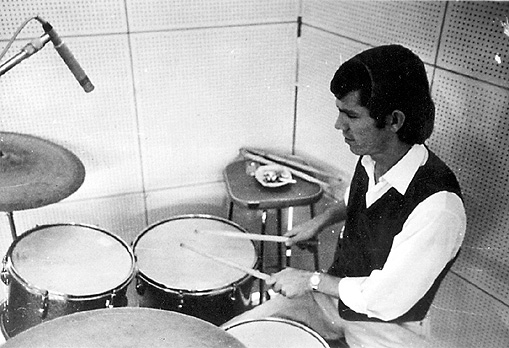
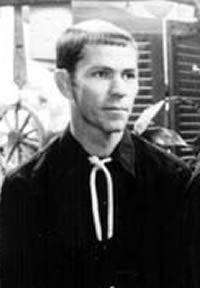
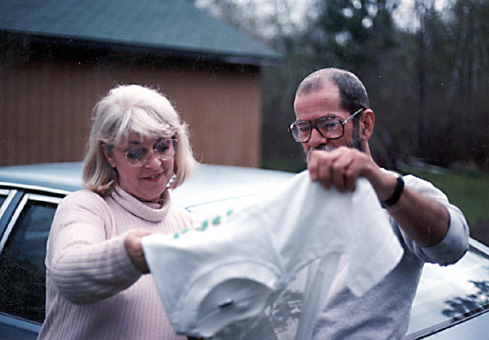

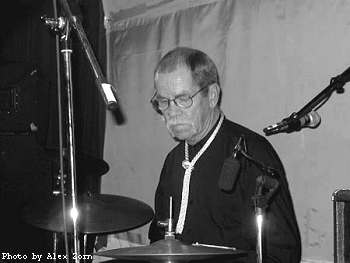
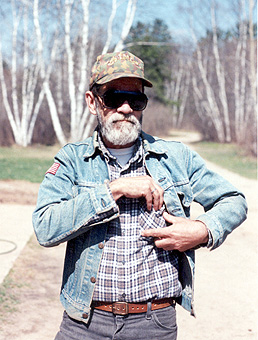

All
contents copyrighted by the Monks |